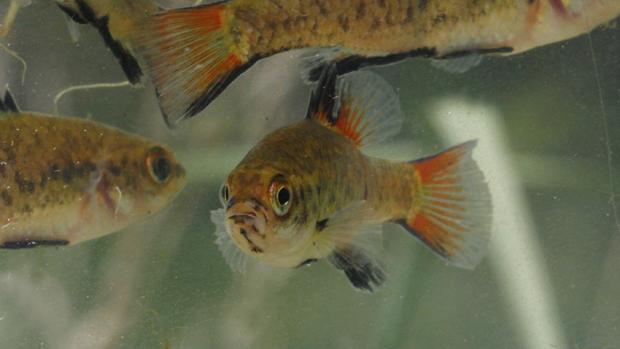Loading
Pygs flying thanks to team effort

Things are looking up for yet another Threatened small-bodied native fish in the region, with the state and federal government agencies’ rescue plan bearing fruit.
The Murray-Darling lineage of the southern pygmy perch were once common in the wetlands and slow flowing creeks of the Basin.
They are now considered Threatened nationally, with their decline thought to be from loss of permanent floodplain wetlands, altered flows, loss of aquatic vegetation, climate change, and introduced fish.
They were last recorded in Gunbower Forest in 1997.
The North Central Catchment Management Authority (CMA), through its Native Fish Recovery Plan, is joining forces with a raft of partners – including the Department of Energy, Environment, and Climate Action’s Arthur Rylah Institute (ARI), the Victorian Government’s Nature Fund, the Murray-Darling Basin Authority’s Native Fish Recovery Strategy, and fish conservation groups – to genetically rescue the southern pygmy perch and help them thrive again.
“In September last year, we joined First Nations people from the Yorta Yorta Nation Aboriginal Corporation Woka Walla works crew to release more than 2,800 southern pygmy perch into Camerons Creek in Gunbower Forest,” North Central CMA Project Manager Peter Rose said.
“The fish were bred up in dams and wetlands around Bendigo with help from the City of Greater Bendigo, and this was our largest release into a wild site to date.
“They were released just before breeding, so the young would grow up in their new habitat and adapt well.”
“The stocking approach was guided by a population model developed by ARI, and using this approach has really paid off”.
A visit back to the site in December revealed impressive results.
“A quick survey discovered 44 southern pygmy perch and six new recruits (young fish). That may not sound like a lot, but it is, considering the site,” Dr Rose said.
“It shows they have successfully bred in Camerons Creek and there is a good chance tens of thousands of them will establish there.
“It also shows how important collaboration is in finding solutions to biodiversity crises, especially in a changing climate.”
